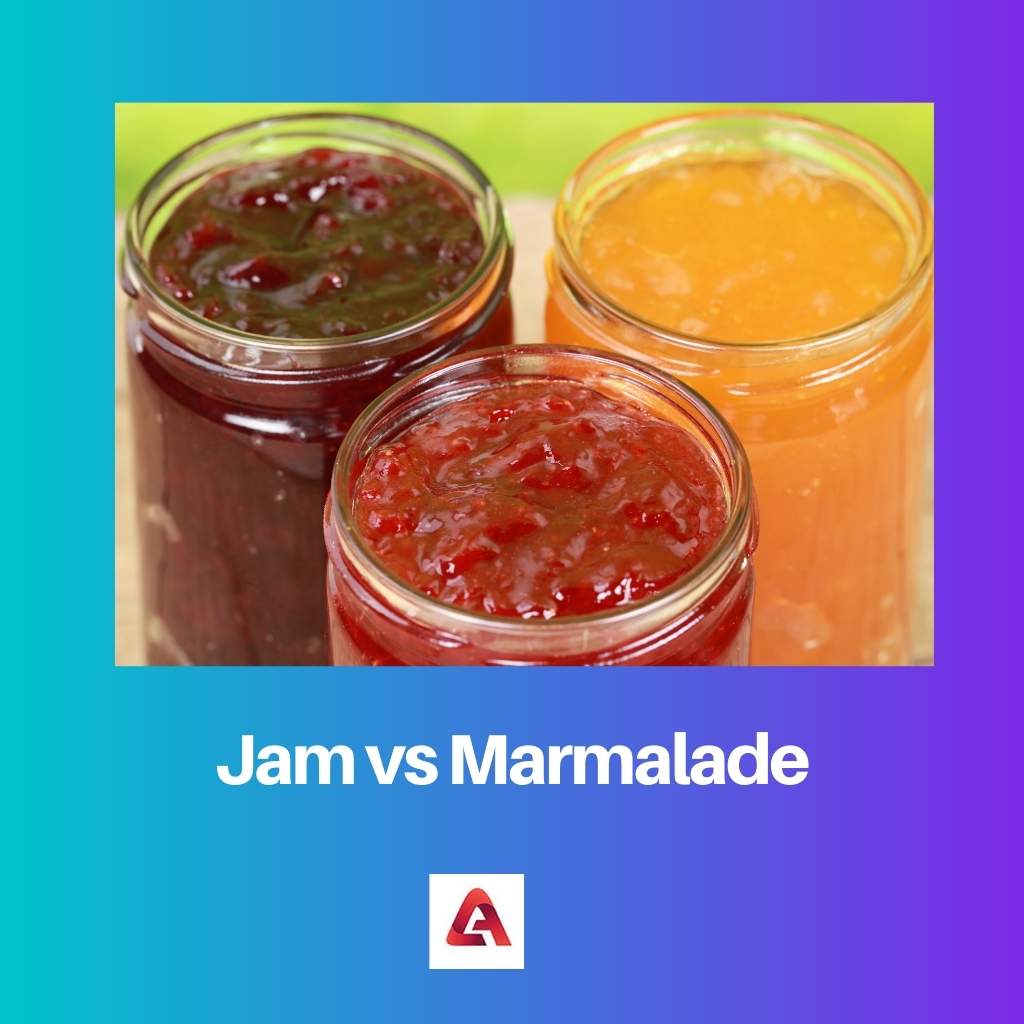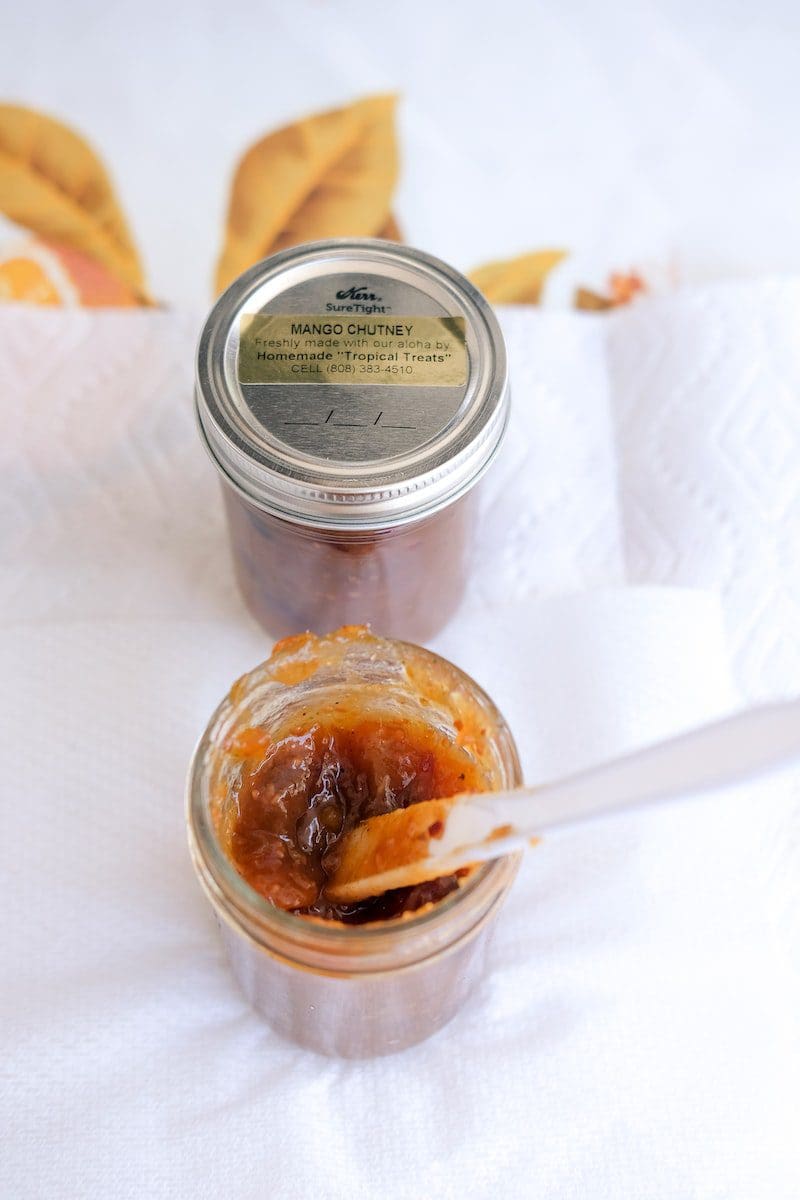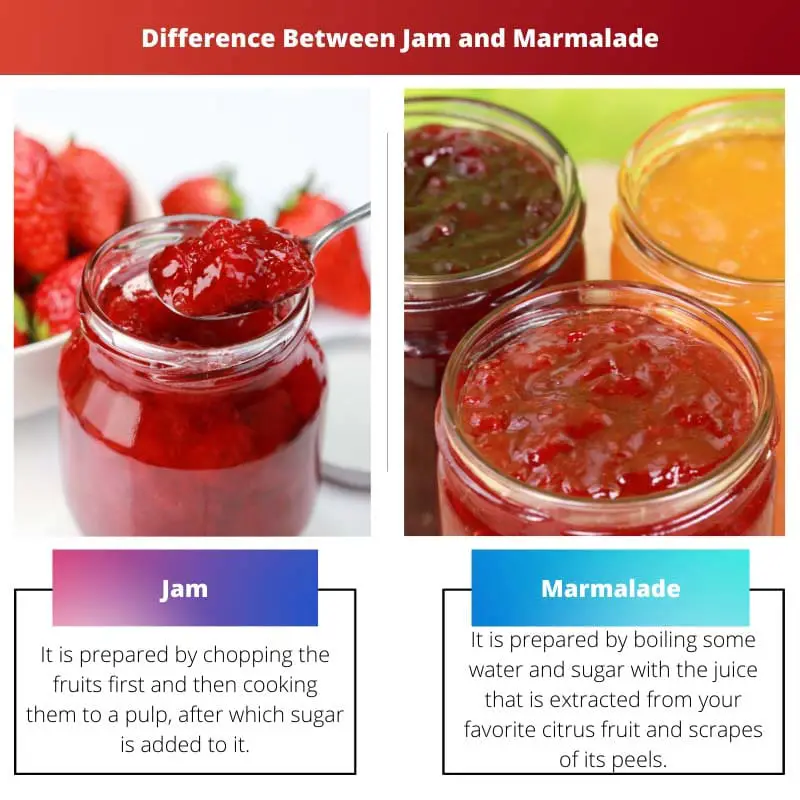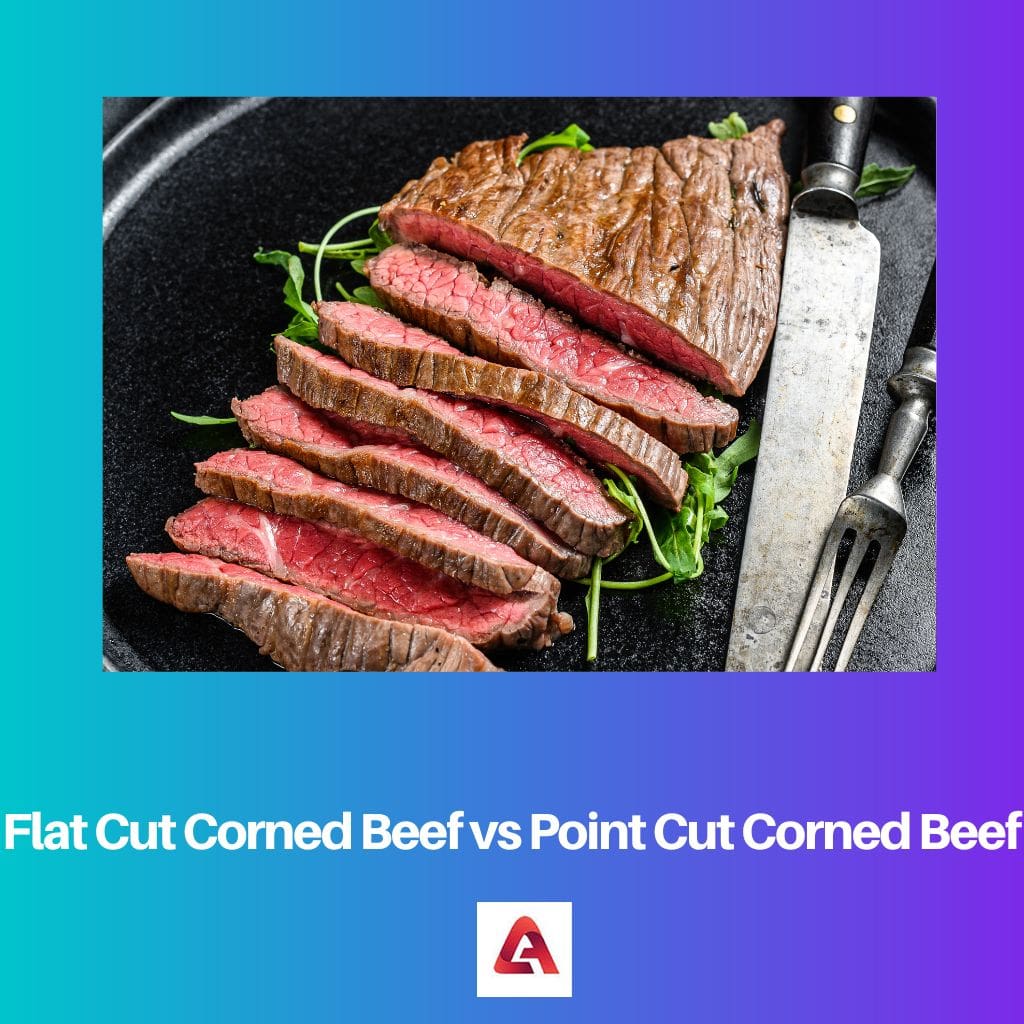Breakfast can become much more delicious if you can pair your toast with something sweet.
After all, it is a common saying that morning shows the day, and what’s better than starting your day with a dose of sweetness?
But first, we should familiarize ourselves with the two most commonly opted sweet breakfast spreads- jam and marmalade.
More than not, there is a common confusion that the two are the same thing. Well, it’s time to bust this misconception.
Key Takeaways
- Jam is made by cooking fruit with sugar, smooth, while the marmalade is made with citrus fruit and contains pieces of fruit peel.
- Jam is more versatile and can be used in various dishes, while the marmalade is used as a spread on toast or biscuits.
- Jam can be made with various fruits, while the marmalade is made with oranges.
Jam vs Marmalade
Jam is made from pressing fruits into a pulp after which sugar and acidity regulators are added. The jam’s consistency is thick and rich in fruity flavour. Marmalade uses citrus fruits like grapefruit, which is boiled with sugar and water. It is made with pulp, peel and pith to get a jelly-like texture and a tangy flavour.

Jam is the sweet breakfast spread that can genuinely cheer up our taste buds when put on our toast. Made from freshly squeezed fruit pulp that is boiled with sugar, this can be a real morning treat.
You can prepare jams of almost any of your favourite fruits- but the most commonly preferred fruits for this are strawberries and pineapples.
On the other hand, Marmalade, though it shares a few crucial similarities with the above-named, still differs from it in key aspects.
The very method of preparing it is quite different. Instead of boiling the pulp, we boil the juices of the fruits with water and a generous amount of sugar. To give it a fruitier appeal, the peels of the fruits are added to it too.
Comparison Table
| Parameters of Comparison | Jam | Marmalade |
|---|---|---|
| Procedure | It is prepared by chopping the fruits first and then cooking them to a pulp, after which sugar is added to it. | It is prepared by boiling some water and sugar with the juice that is extracted from your favorite citrus fruit and scrapes of its peels. |
| Ingredients Required | Fruit pulp, water, and sugar | Fruit juice, peels of the fruit, water, and sugar |
| Area of Origin | This originated in the Middle East | This originated in the United Kingdom |
| Time of Origin | This is significantly old as records suggest it was first prepared in the 11th century. | This was first created in the early 1560s |
| Taste and Consistency | It tastes sweet and pulpy | This is relatively thicker but has a bitter taste due to the inclusion of the peels. |
What is Jam?
This is an embodiment of what fruit tastes like when not in its pulpy form. Jams are best prepared with fruits that are sweet or have a sweet and sour flavour.
Records suggest that the first of its kind was prepared in the Middle East, and you will be surprised to know that this culinary creation took place before the 11th century.
Preserving natural fruit pulps for later consumption has been a common practice since the 4th century, but preparing jam employs a peculiar procedure that was unearthed after a considerable passage of time.
It is prepared by chopping the fruits first and then cooking them to a pulp, after which sugar is added to it.
Generally, berries or sweet fruits are preferred ingredients, but the options are not limited.
You can prepare jams of almost any of your favourite fruits- but the most commonly preferred fruits for this are strawberries and pineapples. Sometimes, even tomatoes are used to prepare it.
After preparing it, the contents should be emptied into a clean and dry vessel to preserve it for a longer period. Then, it can be paired with a piece of toast or a freshly prepared scone.
Sometimes, it is also used in the preparation of other desserts.
| # | Preview | Product | |
|---|---|---|---|
| 1 |

| Bonne Maman Preserve, Strawberry, 13-Ounce | Check Price on Amazon |
| 2 |

| Bonne Maman Preserve, Raspberry, 13-Ounce | Check Price on Amazon |

What is Marmalade?
This is thicker in comparison to jam. Though fruits are the key ingredients in making a marmalade, there are still several factors that distinguish a marmalade from a jam.
It is prepared by boiling some water and sugar with the juice that is extracted from your favourite citrus fruit and scrapes of its peels.
It is believed that the art of preparing marmalade is relatively new.
This is because the earliest recovered records on marmalade show that it was prepared in the early 1560s for the first time that too as a cure for the Queen of Scots’ sickness.
Marmalade, in the early days, was taken as an indicator of one’s economic influence. Accounts state that this was a must-serve dessert in Louis XIV’s feasts.
The fact becomes all the more fascinating because, in those days, sugar came at a great price; it was available only to the bourgeoisie, and the preparation of marmalade demanded a generous scoop of sugar.
The reason why this is much thicker than jam is that it contains the scraped-off peels of the fruit that is being used to prepare it.
Not only does it give the real essence of the fruit to the marmalade, but it also makes it quite zesty. But sometimes, the peels might give it a bitter taste.
| # | Preview | Product | |
|---|---|---|---|
| 1 |

| Tiptree Orange Marmalade, 12 Ounce Jar | Check Price on Amazon |
| 2 |

| Bonne Maman Orange Marmalade, 13 Oz | Check Price on Amazon |

Main Differences Between Jam and Marmalade
- While the history of Jam can be traced back to as early as the 11th century, the preparation of Marmalade is significantly new, as records suggest it was first made in the early 1560s.
- Where accounts state that Jam was first prepared in the Middle East, after which it was taken to the Western lands, accounts provide that the first record of preparing Marmalade was in Europe and especially in the UK.
- The preparation of Jam involves chopping the fruits first and then cooking them to a pulp, after which sugar is added to it. On the other hand, the preparation of Marmalade involves boiling some water and sugar with the juice that is extracted from your favourite citrus fruit and scrapes of its peels.
- The key ingredients that go into the making of a yummy Jam are- Fruit pulp, water, and sugar. However, the ingredients used in the preparation of Marmalade are the same, but it also includes scraped-off peels of the fruit used.
- The taste and texture of a well-prepared jam are sweet and thick but not pulpy. In contrast, Marmalade is thicker and is a little bitter due to the peels.





